If you're like most homeowners, thinking about roof repairs isn't something you do very often. But when it comes to protecting your family, few home-related features do more than your roof does. Your home's roof is much more than a "hat" for your house. It keeps outside elements at bay like rain, wind, sleet, and snow. It also plays an important part in keeping you dry, warm, and comfortable through all four seasons. Those squirrels and other critters you see roaming around your property? It helps keep them away from your family, too.
When you consider those factors, it's easy to see why your roof is such a crucial piece of your everyday life. That's why, when your roof needs quality maintenance, renovations, or repairs, hiring a trustworthy roofing company in Jamestown, SC should be high on your priority list.
For years, Lowco roofing has been South Carolina's go-to roofing contractor for repairs, installations, and other roofing services. As Lowcountry locals, we consider ourselves more than just a roofing company. We're your friends and neighbors who you might see shopping at the local grocery store. As a family-owned roofing company, we pride ourselves on integrity, hard work, and personalized roofing services you can count on.
There's no secret formula that makes our company successful - we simply provide our customers with the highest quality work performed by expert roofing professionals. We like to do right by our customers because if the roles were reversed, that's how we'd like it too. The bottom line is that we do right by our customers and treat them the way we would like our own family to be treated.


Restoration Services
- Roofing Company In Jamestown, SC
- Trustworthy Roof Repairs: Don't Wait Until It's Too Late!
- Roof Repairs in Jamestown: Why Go Pro?
- Out with the Old: Top-Rated Roof Installation in Jamestown, SC
- Attention Homeowners: Here Are Common Signs You Need a New Roof
- Let Us Show You the Lowco Difference
Services Area


When you choose Lowco Roofing, you can rest assured that you'll get the very best:
Experience
Lowco Roofing is a family-owned and operated business with over 30 years of roofing experience. There's no roofing project too small or large for our team to handle. We've seen and done it all, from major roof replacements to preventative roofing maintenance. When combined with our customer service, material selection, and available warranties, our experience sets us apart from other roofing contractors.
Reputation
Lowco Roofing has earned the respect and admiration of our customers by delivering the best craftsmanship and overall customer satisfaction. Our team is happy to assist you with any questions you have. Whether you need a roof inspection for your new home or have questions about roofing shingles, we're here to serve you.
Selection
From shingles, metal, and tile to commercial flat roofing, Lowco Roofing has the product lines and expertise to complete your job correctly, on time, and within your budget. As an Owens Corning Preferred Contractor, we offer the largest selection of shingle styles and products from the most trusted name in shingle manufacturers.
Warranty Coverage
As roofing experts, we know that warranties are important to our customers. That's why we offer the best product warranties around, including lifetime warranties on our shingles. With these warranties in place, you can have peace of mind knowing that your roof protects what matters most in your life.

Now that you know more about Lowco Roofing in South Carolina, you're probably ready to learn more about our roofing services in Jamestown, SC. Here are just a few of our most popular specialties:
Trustworthy Roof Repairs: Don't Wait Until It's Too Late!
If you've lived in South Carolina for long, you know that the weather can be crazy. One moment, it's bright and sunny outside and the next, it's raining cats and dogs. The reality is that South Carolina storms and our climate can wreak havoc on your roof. That's why, when your roof is damaged, you need a top-rated roofing contractor to perform expert roof repairs.
Whether you know for sure you have roof damage, or you're thinking ahead and need preventative maintenance, we can help. It all starts with a thorough roof inspection, so we can understand the scope of your repair needs. Once we know what kind of damage or maintenance you need, our team gets to work repairing damaged materials. When it's all said and done, you can rest easy at night knowing your family is better protected than they were the night before.
But don't wait until it's too late - we've seen countless examples of homeowners procrastinating about their roof repairs. It never ends well! Contact our office today to schedule your free repair estimate.
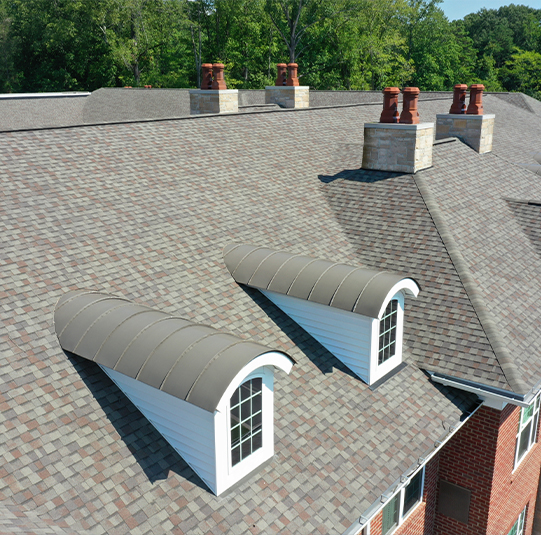

Roof Repairs in Jamestown: Why Go Pro?
Today's world is filled with independent thinkers and DIY specialists, which should be applauded. And as a homeowner, it makes sense to take care of minor issues and repairs yourself. But when it comes to significant, often complex repairs involving your roof, it's always best to rely on licensed, insured roofing contractors. Here's why:
High-Quality Craftsmanship
At Lowco Roofing, we aim to provide outstanding roof repairs and high-quality service. When we repair, replace, or install a new roof in South Carolina, we go the extra mile to make sure our job is completed with excellence. We know the devil is in the details, which is why we triple-check our work for quality. Our goal is to exceed your expectations with real-deal roofing craftsmanship, not mediocre service. If you want your roof repairs to last, it's always best to go pro with Lowco Roofing.
Experience
Like those you'll find at Lowco Roofing, the best roofing contractors have many years, if not decades, of professional experience. That experience is priceless and is one of the reasons why so many customers choose our roofing business. Our contractors have an incredible depth of knowledge, both in roofing repair theory and in practical application. No amount of reading, research, or YouTube videos will compare to real-world, high-level experience.
Warranties
As a customer, you want every assurance possible that your roof repairs and products will last for the long haul. We offer the roofing industry's best product warranties to protect your investment, including lifetime warranties on our shingles. As an Owens Corning preferred contractor, you know you're hiring an elite roofing contractor in Jamestown, SC. As part of the Owens Corning network, you can have confidence that we are dedicated to service, craftsmanship, and reliability.
Turnaround Time
True roofing experts have the tools and training to get the job done quickly and more efficiently than amateurs. Our customers trust us with their roofing repairs because it frees them up to spend time with family and go about their lives without being burdened by roof work. Your weekends are valuable - don't waste them worrying about your leaky roof. We've got your back!
Safety
Safety is often the most pressing concern for homeowners and one of the biggest reasons to hire an experienced roofing professional. Going pro not only helps ensure your safety - it also protects the safety of your home as well. Roof repairs usually involve climbing on ladders, balancing on roofs dozens of feet in the air, and performing under pressure. For the average homeowner in South Carolina, that can create a recipe for disaster. Remember, if you're injured while trying to repair your roof, you won't be the only person suffering. Your family will, too.
Request a Free Estimate OrCall Us
 843-937-2040
843-937-2040


Out with the Old: Top-Rated Roof Installation in Jamestown, SC
Installing a new roof on your home is a complex, intensive process that should be performed by licensed professionals. It can be a large investment, but it's one that will certainly pay off in the months and years that follow. Not only will your family be safer and more comfortable, but a new roof can also raise your home value.
Whether you're giving your home a much-needed re-design or your current roof is in bad shape, Lowco Roofing is the company you can trust to help. Our roof installation experts have replaced countless roofs for homeowners in South Carolina. We hold ourselves to the highest standards to ensure product longevity, customer satisfaction, and quality craftsmanship.
The benefits of Lowco roof installations include:
It might seem obvious, but replacing an old roof is a safe, responsible decision for your family. This is especially true if you know for sure that your current roof is in bad shape.
Safety
Be the envy of your neighborhood! Replacing your old which makes your home look great and can increase the value of your property when it's time to sell.
Enhanced Curb Appeal
Installing a new roof is often a more energy-efficient option than keeping your old one. As a bonus, many homeowners enjoy lower utility and energy bills when replacing their roofs.
Energy Efficient
Because Lowco Roofing uses top-quality roofing materials and shingles from Owens Corning, you can be confident your roof will last for years.
Long-Lasting
There are many reasons why you might want to consider replacing your roof, but most often, the choice stems from necessity. But how do you know when it's time to replace instead of repair?

Attention Homeowners: Here Are Common Signs You Need a New Roof
They say that knowledge is power, but knowing the warning signs of an unsafe roof can save lives. That might sound far-fetched, but if your roof is old and dilapidated, it could be a serious safety issue for your family. To make matters worse, old roofs can cause increased utility bills and affect your overall curb appeal. If your roof looks horrible, costs you money, and fails to protect you from the elements, it's time to call Lowco Roofing.
Here are a few additional signs to look out for:
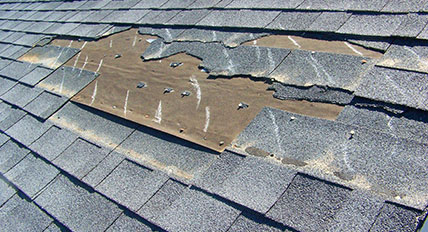
Cracked Shingles
Cracked shingles on your roof render the structure nearly useless. Generally, harsh storms and South Carolina weather cause shingles to crack, especially over time. Cracked shingles are easy to spot, so if you see them, it should be a red flag.
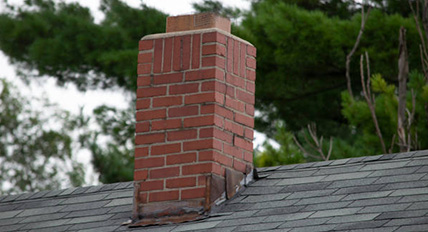
Cracked Flashing
The flashing around chimneys, vents, and skylights seals the seams of your roof, keeping rain and weather out. Examine these points closely to ensure your flashing isn't cracked or broken. If it is, you could have a major water leak, which damages your entire roof.
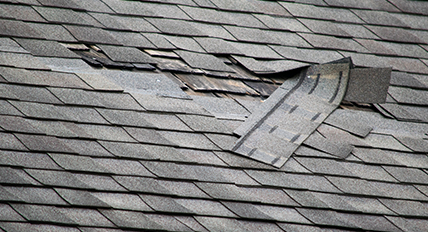
Drooping
If your roof looks like it's sagging or drooping, you need a roof replacement ASAP. Check your roof's surface for signs of rotting boards, trapped moisture, or sagging spots at the lowest points of your roof.
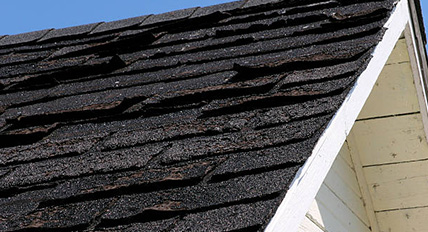
Age of Roof
How old is your roof? Many roofs, especially those with asphalt shingles, can last for decades. But they don't last forever. Review any home improvement records you have to find out when your roof was installed or repaired. If you can find out when your roof was installed, you will have a better idea how much life it has left. As a rule of thumb, common asphalt shingle roofs last 20 to 25 years. A roof installed over existing shingles needs to be replaced after 20 years, if not sooner.
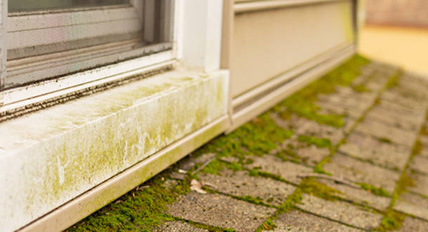
Fungi and Moss
Moss can add a certain old-school, prestigious look to your home, but in reality, it spells trouble for your roof. Moss, like mold and fungi, indicates trapped moisture. When moisture has infested your roof, it could mean it's close to ruining. You could try to carefully remove moss or mold growth with a stiff brush, but chances are you'll need professional help to address underlying problems.

Contact Us
 843-937-2040
843-937-2040

Let Us Show You the Lowco Difference
There's a reason why so many South Carolina homeowners turn to Lowco for roofing services. Sure, we could talk about our accolades and how we're better than other roofing companies. But the truth is, we'd prefer to show you with hard work and fair pricing.
From roof repairs to roof replacement, there's no better company to trust than Lowco Roofing. We have the expertise, experience, products, and tools to get the job done right, no matter your roofing problem. We'll work with you to select the best materials for your roofing needs and budget, and we'll make sure the job is done right from start to finish.
Free Consultation
Latest News in Jamestown, SC
Our Family History: The Story of Jamestown
Derrion Hendersonhttps://www.wmbfnews.com/2023/09/14/our-family-history-story-jamestown/
FLORENCE COUNTY, S.C. (WMBF) - South Carolina is full of southern history that is seeped into the soil from the Grand Strand to the Lowcountry and over to the Upstate.However, in Jamestown, a small community nestled in Florence County, a family meets every year to celebrate more than just a reunion.The James family meets on several acres of land dating back to the 1870s and their family’s patriarch, Ervin James.“Shortly after slavery, five years, Ervin James did not want to be a tenet farmer or sharecropper,&...
FLORENCE COUNTY, S.C. (WMBF) - South Carolina is full of southern history that is seeped into the soil from the Grand Strand to the Lowcountry and over to the Upstate.
However, in Jamestown, a small community nestled in Florence County, a family meets every year to celebrate more than just a reunion.
The James family meets on several acres of land dating back to the 1870s and their family’s patriarch, Ervin James.
“Shortly after slavery, five years, Ervin James did not want to be a tenet farmer or sharecropper,” Terry James said. “He wanted his own land to have true freedom.”
Ervin James is Terry’s great-great-great grandfather.
He said he isn’t sure where Ervin got the money following the Civil War, but somehow, he bought a few acres from a white man named Eli McKissick.
“Can you imagine standing around former people who used to own you,” Terry James said. “[To] own people like you and you’re with them buying stuff. I said this dude was amazing.”
The beauty of it all, Ervin James was just getting started.
Plank by plank, he built wooden homes that still stand today, fostered a self-sustained community and maintained a safe haven for Black South Carolinians.
“You had several of these,” Terry James said pointing to an old home. “It’s like 22 of them of these cabins stretched all over this place. This is just one of them and everything was grown here.”
It’s that pride that encourages the James family and friends alike to return to Jamestown every year for a celebration.
From the artistry of craftsmanship to the styling of woodwork and the soul of original outdoor cooking, it’s all an appreciation of Ervin James and the legacy he left behind and a promise to never let it go.
“As his descendants, we have an assignment to make sure Jamestown not only survive but to thrive,” Terry James said. “No selling around here. None, zero, zilch.”
As Terry James uncovered more of his family’s history, he discovered a connection unlike anything he’d ever imagined.
“I like connecting the dots and that was an important dot,” he said.
“When you dig and dig and you can’t find anything and you hit walls and then someone comes and knocks your wall down,” Helen Thompson said. “It was [amazing].”
The James-McKissick Connection
As the James family dug into their history, they ended up finding the family who sold them their prized possession.
While they searched for their family history in Florence County, Helen Thompson was tirelessly and exhaustingly trying to find her own.
“Some of the original records are just illegible,” Thompson said. “When I first started genealogy I was asking my dad about his family and all he would ever tell me is that his grandfather was a methodist preacher named Eli McKissick.”
With little information, Thompson turned to government records.
“The McKissick name, I wanted to take it as far back as I could,” Thompson said.
So, she went digging, both near and far with all hands on deck.
“Back before the internet, I just went to archives and libraries,” Thompson said. “I was traveling to Greenwood, Harleyville, different places. It was pretty tedious; I drug the kids around doing all of that.”
Through her research, Thompson traced her family tree from back to her great-grandfather until her phone rang.
“I got a call from Terry James,” she recalled. “I was so excited. I couldn’t believe it.”
“When I met her, I could feel a sigh of relief,” Terry James said.
On the other side of the phone, James had quite the story connecting their grandfathers.
“Eli McKissick, in my research, bought 300 acres for $500 plus,” James said. “But he sold a portion of that land to Ervin James for $700.”
Facing backlash from the sale following the Civil War, McKissick fled to Georgia while Ervin James stayed put, named this property “Jamestown,” and created a self-sustained Black community that’s still family-owned today.
Following their emotional hour–long conversation, Terry James extended a southern invitation for Thompson to come to his annual family reunion.
“It was real exciting,” Thompson said. “I had to go see it. I had to go see that property.”
“She just looked around and she started crying,” Terry James recalled. “It was emotional for me too.”
And what she saw blew her mind.
“Just knowing that that family is carrying this thing on generation after generation just means so much,” Thompson said. “They’ve not let the history drop, they wanted to pass it on through generations and it’s just incredible.”
While no census document will ever reveal the deal behind their grandfathers’ 1870s agreement, both James and Thompson are assured their family history will be connected forever.
“I don’t know his motive,” Thompson said speaking of her great-great-grandfather. “But yet what came out of that is just great.”
“90 or 100-something years later we found each other,” James said.
The beauty of Jamestown and its story will live on forever as it sits on the National Register of Historic Places.
Visit the Jamestown Foundation to learn more about upcoming events and to learn if you may be a part of the James family heritage.
Copyright 2023 WMBF. All rights reserved.
In our fiber: Berkeley County wool plant shows textile industry’s persistence
Eva Moore evam@free-times.comhttps://www.postandcourier.com/news/in-our-fiber-berkeley-county-wool-plant-shows-textile-industry-s-persistence/article_61b7dc44-1022-11e7-989b-93d63b5a9528.html
JAMESTOWN — Trevor Goodwin is cutting open packages full of raw wool. In its raw state, the wool is speckled with twigs and dirt and drenched with lanolin, the natural oily wax that sheep produce to protect and waterproof their wool.In fact, the entire massive warehouse smells of lanolin — an earthy, comforting, animal smell, like putting your face in the fur of your favorite dog.Goodwin’s job is one of the first steps in processing greasy wool, as they call it here, into the gleaming white combed wool, called...
JAMESTOWN — Trevor Goodwin is cutting open packages full of raw wool. In its raw state, the wool is speckled with twigs and dirt and drenched with lanolin, the natural oily wax that sheep produce to protect and waterproof their wool.
In fact, the entire massive warehouse smells of lanolin — an earthy, comforting, animal smell, like putting your face in the fur of your favorite dog.
Goodwin’s job is one of the first steps in processing greasy wool, as they call it here, into the gleaming white combed wool, called “wool top,” that is the Chargeurs Wool USA factory’s main product. Wool top is used by spinning mills, many of them based in the Southeast, to spin worsted yarn used in military coats and specialty athletic socks.
With President Donald Trump talking about bringing back American manufacturing, some companies are looking for ways to curb or end their foreign manufacturing operations — and it’s throwing attention on longtime U.S.-based manufacturing like Chargeurs.
“More and more, customers are interested in everything to be made in America,” says Diego Paullier, Chargeurs Wool USA’s managing director and president. “American wool — they can give that a value, an additional value.”
The military is a key customer. One industry expert wrote in a trade journal that the military will buy 60 different items made from wool in 2017, from Army berets to Navy pea coats — 50,000 this year alone — to Air Force dress uniforms. The wool that goes into many of those items will be scoured and combed at Chargeurs.
This huge factory in Jamestown — a tiny town in upper Berkeley County, about an hour from Charleston — processes up to 50 percent of the roughly 26 million pounds of wool shorn from U.S. sheep in any given year. Opened in 1955, it’s the only remaining wool top-making facility in the country.
It’s a throwback in some ways: a reminder of when textile manufacturing was king in South Carolina and mills dotted the state, before the industry largely moved overseas. This isn’t a shiny, modern, highly technical plant like Boeing’s in North Charleston or BMW’s in Greer. Wooly lint clings to every machine and beam. The machines are decades old.
The plant is part of the future, too.
The cheaper cost of automation these days means American manufacturing is starting to be competitive again, says Mark Ferguson, department chair for the management science department at the University of South Carolina.
“It was happening before Trump,” Ferguson says. “I think it’s happening more than most people probably realize. The reason that’s going under-noticed is the manufacturing that’s coming back is not requiring the number of jobs or providing the number of jobs that we historically associate with it.”
That’s true at Chargeurs, where about 60 employees work, spread out over three eight-hour shifts Monday through Friday.
Wool is an old-school fiber — but it’s used these days in technical clothing, like outdoor and military gear. It absorbs liquid without feeling damp or losing its insulating value, which means it wicks sweat and keeps people warm in tough conditions. It’s also antimicrobial, so it doesn’t have to be washed as often.
Federal data shows U.S. wool production has been stable over the past five years, though it dropped in the decade before that.
Overall, the textile industry has become specialized, dealing in fancier fibers and products — think body armor, “smart” fabrics and, actually, wool.
In the wool prep area at Chargeurs’ Jamestown plant, Goodwin feeds wool into the mouth of a large machine.
“He has to follow a recipe — you know, it’s like making a cake,” says Paullier. “You have different components — the sugar, the flour. Here it’s a little bit like that. We blend wools from different states. All wools have a little bit of a difference. One’s longer, one’s whiter.”
Next, the raw wool is tumbled and tossed together in a machine.
This is also the first step in removing the massive amounts of dirt and vegetable matter that sheep accumulate through the business of being sheep. There’s dirt everywhere, being shaken out of the fleeces and removed from the machine on conveyor belts.
The wool is then fed automatically into an enormous washer. The scouring machine is at least 100 feet long and high as a house. Ominous plumes of steam shoot up all over.
Chargeurs saves the lanolin it removes from the fleeces during the washing process. It’s valuable, making its way into cosmetics and more — and it also makes it easier to clean the wastewater if it’s not full of grease.
The chief reason the Chargeurs plant sits on 550 acres of land in a mostly rural area near S.C. Highway 41 is that it has its own wastewater facility for cleaning the masses of dirty water it creates — and wastewater treatment requires lots of space.
After scouring, the wool is dried, then fed through overhead pipes to a series of machines that brush and straighten the wool. Combing will remove still more vegetable matter, neps (little blobs of wool, also called entanglements) and noils (pieces of short fiber).
The combing also makes all the fibers lay parallel to each other. That’s what makes it wool top rather than just carded wool: It’s smooth, ready to be spun into plied yarn.
Meanwhile, the cleaned, dried and combed wool is coiled up into 100-pound balls and shipped to the customer. Chargeurs, a subsidiary of a French company, occasionally imports or exports something, but most of what it sells is to nearby textile mills.
One of the places Chargeurs ships its wool top is just a few hours up the road.
Kentwool was founded in 1843 in Philadelphia — and it’s now based in Greenville, where it employs fewer than 100 people.
Kentwool takes wool top from Chargeurs, combines it with nylon, and spins it into fine yarn. The yarn is then sent to other U.S. companies that knit it into socks. While it has several divisions, Kentwool specializes in performance golf socks — the kind sold at high-end pro shops.
Keith Horn, president of Kentwool, says the company succeeds because it’s not competing directly against overseas production. It’s a different kind of product.
“That’s sort of a misnomer, to compete,” he says. “We’re not looking to put out a run-of-the-mill product, just cheap. We want to make a product that’s top of the line, that fits a niche market.
“You can go buy stuff cheap all day long,” Horn says, “but sometimes you get what you pay for.”
Jamestown Breaks Ground on 79-Acre Navy Yard Redevelopment Project in North Charleston
REBusinessOnlinehttps://rebusinessonline.com/jamestown-breaks-ground-on-79-acre-navy-yard-redevelopment-project-in-north-charleston/
NORTH CHARLESTON, S.C. — Jamestown, along with local real estate developers Weaver Capital Partners and WECCO Development, has broken ground on the first buildings at Navy Yard Charleston, the 79-acre mixed-use redevelopment of a former naval base in North Charleston.This first phase of the redevelopment involves converting two historic storehouses — Storehouse 8 and Storehouse 9 — on the project site into a total of 107,000 square feet of mixed-use space for restaurants, retail, office space and apartments. The buil...
NORTH CHARLESTON, S.C. — Jamestown, along with local real estate developers Weaver Capital Partners and WECCO Development, has broken ground on the first buildings at Navy Yard Charleston, the 79-acre mixed-use redevelopment of a former naval base in North Charleston.
This first phase of the redevelopment involves converting two historic storehouses — Storehouse 8 and Storehouse 9 — on the project site into a total of 107,000 square feet of mixed-use space for restaurants, retail, office space and apartments. The buildings are scheduled to open in 2024.
The 40,000-square-foot, two-story building known as Storehouse 8 will be restored and repurposed as a restaurant, event space and offices. To preserve the history and character of the building, which was constructed in 1906 as naval administrative offices, the renovation will salvage architectural details such as the original hallways, trim, railings, flooring, slate roof and copper soffits.
The adjacent Storehouse 9, a 67,000-square-foot, four-story building constructed in 1918 as naval administration offices and storage facility, will be converted into restaurant and retail space on the ground floor, a rooftop bar and restaurant with views of the Cooper River and 86 multifamily units offering flexible live/work layouts.
In addition to the redevelopment of Storehouses 8 and 9, this phase of the project also includes the construction of a new restaurant space to be known as Storehouse 8.5 within the plaza between the buildings. The plaza will be amenitized as a community gathering place and include outdoor dining space, event lawn and game area.
Navy Yard Charleston joins a number of historic naval yards across the nation that have recently been reimagined and repurposed for modern use, including the Brooklyn Navy Yard and Navy Yard, Philadelphia. The multi-phase redevelopment, first announced in 2021, will transform the campus into a mixed-use neighborhood.
Since announcing the Navy Yard Charleston project, the development team has partnered with neighborhood organizations and community groups, including Charleston Promise Neighborhood and Historic Charleston Foundation. A neighborhood employment program reserving project-specific positions for local residents will be launched as part of the redevelopment of the Navy Hospital, expected to commence this year.
Navy Yard Charleston began as a working dry dock in 1901, maintaining a naval presence in North Charleston until it was decommissioned in 1996. Today, the site includes the former Navy Hospital, a neoclassical power plant, naval infirmary, and a series of storehouses.
— Kari Lloyd
North Charleston takes next step in old Navy Base redevelopment plan
Raymond Owenshttps://www.counton2.com/news/local-news/north-charleston-takes-next-step-in-old-navy-base-redevelopment-plan/
NORTH CHARLESTON, S.C. (WCBD) – Redevelopment will soon begin on another large portion of the old North Charleston Navy Base property.If you have visited Riverfront Park in North Charleston, you may have walked across the new pedestrian bridge – sometimes called the bridge to nowhere – but the property on the other side of Noisette Creek will soon no longer be referred to as “nowhere.”“The City of North Charleston (has) been looking to ...
NORTH CHARLESTON, S.C. (WCBD) – Redevelopment will soon begin on another large portion of the old North Charleston Navy Base property.
If you have visited Riverfront Park in North Charleston, you may have walked across the new pedestrian bridge – sometimes called the bridge to nowhere – but the property on the other side of Noisette Creek will soon no longer be referred to as “nowhere.”
“The City of North Charleston (has) been looking to redevelop the Navy Base since the navy base closed in the late 90s. There’s been some successes, some failures – and the latest effort has been—I’ve been working on it for years,” said Adam MacConnell, senior project manager for North Charleston.
North Charleston City Council approved a plan Monday night that would allow Jamestown LLC to redevelop the property that is owned by North Charleston from Virginia Avenue towards the river.
It would be a more than $1 billion project.
“We really wanted to get this done before Mayor Summey left because, really, he came in during the closure of the base and was a huge leader in the region during that time, which was really a crisis for the region,” MacConnell said.
3,000 residential units, including apartments, will be part of the plan.
“For us, it’s an opportunity to create a central business district like a downtown center for North Charleston. A true downtown. We have the old village, and it has been wonderful- it’s a great, great community that is built around there. Other than that, we have Tanger. We have some of the mall areas. But we don’t have a real downtown. And to be able to create a downtown area with waterfront access to the public that has places for people to work, live, to eat, to play.”
State Representatives Marvin Pendarvis and Wendell Gilliard released statements about the plans. They want 30% of the contracts for work to go to minority-owned businesses, and 30% of the residential properties to be affordable housing.
“The agreement that we have provides an aspirational goal of 15% disadvantaged business enterprise participation,” he said,
The agreement provides at least 17% of the units for workforce housing, meaning rent would be kept where people making 120% of the area median income could afford it.
Reps. Pendarvis and Gilliard also want Mayor-elect Reggie Burgess, and the new council, to have a chance to review the plans.
“This project has taken 30 years and it’s going to take 30 more years to build this project out. Every administration from now through the end of this project is going to have an opportunity to put their mark on it,” said Mac Connell.
L/L-M boys' hoops finish seventh, Sargent County finish fifth
Max O'Neillhttps://www.jamestownsun.com/sports/college/l-l-m-boys-hoops-finish-seventh-sargent-county-finish-fifth
MINOT, N.D. — The LaMoure/Litchville-Marion boys’ basketball team ended their season with a win as they got a 59-55 win over Edgeley/Kulm-Montpelier in the seventh-place game of the 2024 NDHSAA State tournament on Saturday, March 16, at the Minot State Dome.The Rebels (21-7) got out to a quick 6-2 lead and were able to push it out to 18-12 in the second quarter. The Loboes (17-12) fought back to take a 27-24 lead on a Max Musland three and were able to stretch it out to 33-30 heading into the half.The Rebels outscor...
MINOT, N.D. — The LaMoure/Litchville-Marion boys’ basketball team ended their season with a win as they got a 59-55 win over Edgeley/Kulm-Montpelier in the seventh-place game of the 2024 NDHSAA State tournament on Saturday, March 16, at the Minot State Dome.
The Rebels (21-7) got out to a quick 6-2 lead and were able to push it out to 18-12 in the second quarter. The Loboes (17-12) fought back to take a 27-24 lead on a Max Musland three and were able to stretch it out to 33-30 heading into the half.
The Rebels outscored the Loboes 14-9 in the third quarter to take a 44-42 lead but the Loboes outscored the Rebels 17-11 in the fourth to get the four-point win.
The Rebels were led by Jacob Nitschke’s 19 points. The Loboes were led by Max Musland’s 36 points.
L/L-M 59, E/K-M 55
L/L-M: 12 21 9 17–59
E/K-M: 18 12 14 11—55
Points leaders:
L/L-M: Max Musland 36, Brayan Karlgaard 8, Blase Isaacson 7
E/K-M: Jacob Nitschke 19, Austin Strobel 13, Zeke Barnick 9
Assists leaders:
L/L-M: Isaacson 3, Musland 2, Gunner Thielges 2, Owen Lesko 1, Wyatt Miller 1, Karlgaard 1
E/K-M: J. Nitschke 5, Barnick 3, Joe Kramlich 3, Brad Kinzler 1, Strobel 1, Brogan Young 1, Drew Nitschke 1
Leading rebounders:
L/L-M: Musland 11, Lesko 5, Thielges 5, Karlgaard 3
E/K-M: Strobel 7, J. Nitschke 4, Kramlich 3
Sargent County beats Our Redeemer’s
The Sargent County boys’ basketball team withstood a fourth-quarter rally attempt from Our Redeemer’s to get a 67-65 win in the fifth-place game of the NDHSAA state tournament.
The Bulldogs led for 21 minutes and two seconds, while the Knights led for 8 minutes and five seconds.
The Bulldogs (21-7) leading scorer was Luke Martinson with 15 points. The Knights' (19-10) leading scorer was Nolan Schmidt with 21 points.
SC 67, ORCS 65
SC: 20 12 21 14–67
ORCS: 19 15 11 20–65
Points leaders:
SC: Luke Martinson 15, Grady Wehlander 14, Nicholas Hansen 13
ORCS: Nolan Schmidt 21, Payten Lindbo 14, Jace Weekley 11
Assists leaders:
SC: Hansen 3, Josh Wittich 2, Martinson 1, Kolten Kadoun 1
ORCS: Weekley 5, Schmidt 3, Weekley 1, Gus Engelhard 1
Leading rebounders:
SC: Wittich 12, Kadoun 5, Martinson 4, Hansen 4, Wehlander 2
ORCS: Schmidt 7, Ebay 7, Lindbo 4, Engelhard 3
Disclaimer:



